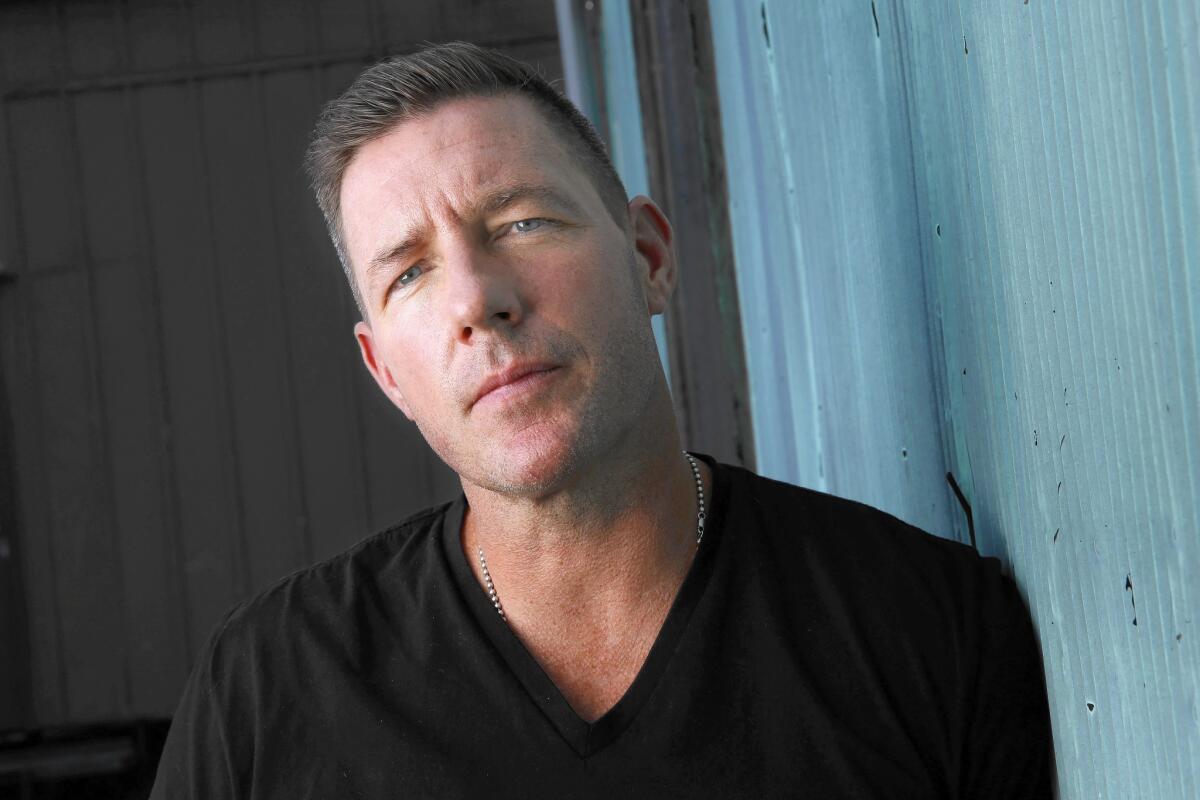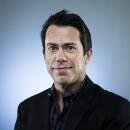Q&A: Ed Burns displays his original indie attitude with ‘Public Morals’

- Share via
Ed Burns broke into the public consciousness 20 years ago when he wrote, directed, produced and costarred in “The Brothers McMullen,” an independent film comedy about Irish Americans in New York. Since then he has appeared in numerous other films, including “She’s the One,” “27 Dresses” and most notably “Saving Private Ryan.”
This fall the 47-year-old New York native is back with “Public Morals,” a TNT period drama about the NYPD vice squad that he wrote, directed and stars in. He spoke with The Times by phone from New York:
“Public Morals” is about the NYPD in the 1960s when, according to the show, cops took bribes and consorted with hookers. Your dad was actually a sergeant on the force then — what does he say about all this?
My dad is the one who turned me on to my love of New York and NYPD history. We’re constantly finding these great old books and sharing them with one another. There’s a book from I think the ‘30s or ‘40s called “A Cop Remembers,” about a cop in New York at the turn of the century. They talk about institutionalized corruption. There isn’t a book that you can pick up that doesn’t talk matter of factly about the way things used to be. The reason I set this show in the early ‘60s is that that was the last era that that was taking place. As you moved into the late ‘60s and the ‘70s, not only had the city changed, but the police department had changed pretty dramatically.
In a perfect world we get to play with five or six seasons and we can see how that institutionalized corruption was sort of exposed and then ended.
SIGN UP for the free Indie Focus movies newsletter >>
This isn’t just another cop show. For one thing, it’s not set in the homicide division. The character you play, Det. Muldoon, puts the heat on prostitutes and gamblers, not murderers.
We’re very lucky that TNT really wanted to move the network in a different direction. Part of that was more character-based storytelling rather than episodic, murder-of-the-week storytelling. There was never a conversation about “How do we make this a procedural?” They jumped right in and were fully supportive. I think that’s why you’re seeing a lot of indie filmmakers making the jump to TV. “Why bang my head against the wall with the movie studios who only seem to be interested right now in fantasy?” You look at David Simon, David Chase, Matthew Weiner — the great success the networks are having when they embrace the filmmakers’ individual voice and, most importantly, leave them alone.
Earlier this year you published a book, “Independent Ed,” designed as a primer for the aspiring young filmmaker. What’s easier to write, a screenplay or a book?
Unlike writing a screenplay, I found writing the book, beyond the first draft, was like a homework assignment. Going back and talking about the individual films was a lot of fun. It reminded me of some things and anecdotes that I had forgotten. But then going through the transcript and having to sort of fine tune it and put it into my voice, that was really the challenge.
The greatest thing happened this past weekend. Out in the Hamptons they do this author’s book fair. About the fifth woman in line comes up with a book and she says, “Do you recognize me?” And I say, “I kind of do, give me a hint.” She says, “You were in high school...” I say, “Oh, my God, Mrs. Maxwell! ... Do me a favor and open up the table of contents.” You know, my first chapter is “Thank you, Mrs. Maxwell.” She was the teacher who gave me the kick in the butt and believed in me as a writer.
Is there even an indie film market that young people can still aspire to? Everything today seems like it’s big-budget franchise pictures.
Absolutely. Every year there is another filmmaker who shows up at Sundance with a lower-budgeted movie, and that kid ends up with a career. Just this past year, I haven’t seen the film, but apparently there was a feature film that was shot on an iPhone at Sundance.
It’s evolved in the last 20 years since “Brothers McMullen,” but if anything it’s easier for kids today because the barrier for entry is almost nonexistent. You can get your hands on a digital camera, in this case an iPhone, and you can edit on your laptop and you’ve got yourself a feature film. Back when me and guys like Richard Linklater were starting with our low-budget films you had to find somebody who actually knew how to shoot films and you had to find a film camera, and then film stock and film processing, all of which is very expensive.
So If you were making “Brothers McMullen” today you’d be shooting it on an iPhone?
I don’t know about an iPhone, but I absolutely would not be shooting it on recanned 16-millimeter film stock.
Your wife, the former supermodel Christy Turlington, is also a filmmaker; her documentaries “No Woman, No Cry” and “Every Mother Counts” are about making pregnancy safer for women in developing countries. Have you had advice for her?
In the editing room I would just say, “You have to remember, you also need to tell the story along with the message that you’re trying to get out. You’re trying to bring awareness to maternal mortality. OK, but you’re still going to have an audience sit down here for 90 minutes — so you have to find the story within all that footage.”
You’ve been very candid about your failures as well as your successes. After “Saving Private Ryan,” it looked as if you might become a huge movie star. Why didn’t that happen?
After “Brothers McMullen” my goal was to write and direct and act in one movie a year and stay in New York. When trying to get my third film financed, my agents came to me: “Look, if you’re going to continue to cast yourself please think about acting in someone else’s film in a studio film. You will become more famous, and it will then be that much easier for us to put together the financing for the films you want to make as a filmmaker.”
I looked at a bunch of scripts and one of the first scripts I get is for “Saving Private Ryan.” I threw my hat into the ring and couple of months later we got the call that Spielberg thought I was right for the part. After “Private Ryan,” my agents were then like, “OK, you’ve got a big part in a big Steven Spielberg movie; forget about making indie movies, it is time to pursue being a movie star.”
At the time, I was all in. I was ready to do it. I moved to L.A.; we read a ton of scripts, a lot of offers were coming in. I waited almost a year before we found what we thought was the right follow up, a movie called “15 Minutes,” where I’m co-starring with Robert De Niro.
It felt like a no brainer. But then “15 Minutes” came out and kind of did not do too well, so the movie star thing was already starting to fizzle. I got to do a movie with Angelina Jolie, a romantic comedy called “Life Or Something Like It.” That bombed. I did a movie that I really loved called “Confidence” with Dustin Hoffman and Andy Garcia and that bombed. So that was sort of the end of the run where people were calling me up saying, “Hey, we want you to be the lead in our movie.”
Young people who see “Public Morals” may be struck by some of the unfamiliar parenting styles on display. For instance, in the first episode Muldoon is seen berating his school-age son with a sarcastic monologue about what an idiot he has raised.
The one part of the show that is autobiographical is the relationship between the oldest son and Muldoon. That scene that you mentioned is word-for-word me and my dad when I’m in the sixth grade.
But that’s not how you talk to your kids?
No, no. Those days are over. But back in the ‘70s, that’s the way we were raised.
MORE:
TNT’s fine ‘Public Morals’ sets itself apart from cop dramas
Starz’s ‘Blunt Talk’ with Patrick Stewart a weird and welcome addition
‘Fear the Walking Dead,’ but you’ll probably laugh along the way
More to Read
The complete guide to home viewing
Get Screen Gab for everything about the TV shows and streaming movies everyone’s talking about.
You may occasionally receive promotional content from the Los Angeles Times.







